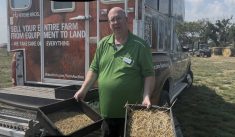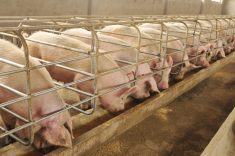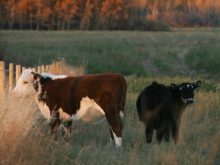Canadian beef exports to Central and South America markets are making a comeback.Panama has announced it is accepting Canadian breeding cattle and expanding market access to bovine genetics, said a news release from agriculture minister Gerry Ritz and international trade minister Peter Van Loan.In 2009, the value of Canadian agriculture and food exports to Panama was $23.5 million. The two countries signed a free trade agreement last month and once implemented, a wide range of products may be exported.Talks are also underway with Peru, which depends on beef imports.The country’s imports from Canada peaked in 2001 when it bought 3,000 tonnes of mostly offal products worth $3.5 million.The Canada Beef Export Federation is helping bring 12 Peruvian buyers to Canada who represent companies responsible for 90 percent of Peru’s total meat imports.Trade with Central and South America peaked at 6,000 tonnes before BSE was detected in Canada in 2003, and markets are returning one country at a time.Honduras, Guatemala and El Salvador now accept Canadian boneless beef from animals younger than 30 months.These returning markets are small but lessen Canada’s dependence on exports to the United States.“We have moved from less than 10 percent of exports outside of the United States in 1990,” CBEF president Ted Haney told the recent British Columbia Cattlemen’s Association convention in Williams Lake.“In 2002, we had moved to about 40 percent of total sales.”However, key markets in Asia continue to frustrate traders.“Our trade recovery is nowhere complete. We have a long ways to go.”Canada traded with 100 countries before the discovery of BSE. Now, varying levels of access are offered in 72 countries.Haney said an extra $85 per head could be extracted in carcass value if Canada could restore access to key markets such as Japan and South Korea, which are completely closed. Without that premium, primary producers see no improvements in their farmgate price.He said Canada shipped 81,000 tonnes to Asia and Mexico last year. Export projections of a few years ago suggested more than 130,000 tonnes were possible.Japan is talking to the United States about changing the age limit of cattle to younger than 30 months from 21 months, but Canada has been excluded.Haney said Japan had promised it would deal with Canada and the U.S. together but has not followed through on that.“All of those kind words Japan gave us for all those years weren’t really true,” he said.Canada has also challenged South Korea before the World Trade Organization, but many hope for a settlement before the case goes further.
Read Also

VIDEO: How to check your feed mixer’s efficiency
Dwayne Summach, livestock and feed extension specialist with the Saskatchewan Ministry of Agriculture, showed visitors at Ag in Motion 2025 how to use the Penn State Particle Size Separator to check the efficiency and performance of your total mixed ration feed mixers.

















